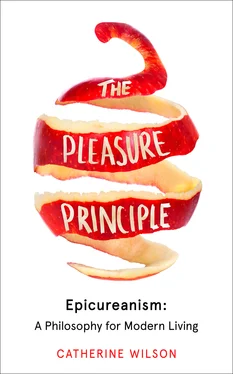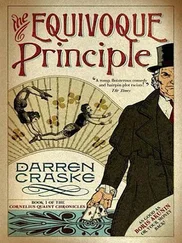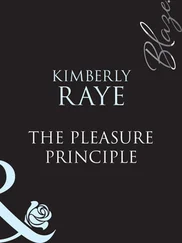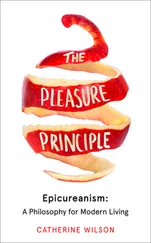Descartes’s official theory of the special human soul put him in good and extensive company. The majority of the human race believed in his time, and the majority still believes, that the soul is a something that lives in the body. The soul is thought of as a permanent, indestructible entity that can survive the death of the body. Not only can it survive, it can reattach itself to a new living body – either the resurrected body of the person who died, or one of their descendants, or an animal of another species – where it will continue to see, feel and think to the extent permitted by that body. The Epicurean of today will, however, insist that the soul is not able to detach itself from its original body or attach itself to another unensouled human body. My death, she supposes, will be the end of all my experience and thinking, and it will not be the start of some other being’s experience and thinking, except in the sense that some of the particles composing me may eventually find their way into another organism.
But if we don’t have immaterial and potentially immortal souls or minds, how can thought, experience and voluntary movement be explained? No one today can take seriously the idea of soul atoms. As we see it, there is something about how my living body is put together from individually lifeless and thoughtless particles that enables me to be conscious, aware of my environment, subject to pain, able to initiate actions, to reflect on myself and the world, to make plans and decisions, and to build and create. Nothing more than a brain, composed of molecules, which are composed of atoms, which are composed of subatomic particles, located in an animal body is needed for experience, thought and voluntary movement. And it is not a foregone conclusion that a brain is necessary for feeling and deciding. Other biological structures found in living beings, or even other structures or programs that could be placed into computers, might make thought and feeling possible.
The Evolution of Consciousness
It is currently thought that consciousness may be widely distributed in nature. There is little doubt that mammals and birds have experiences and feel emotions, and the sensation of pain must have appeared very early in evolutionary history. As difficult as it is to imagine the experiences of a gecko or a spider, many animals, including fish, reptiles, cephalopods like octopi and squid, and even insects, have a good claim to awareness of a sensory world of flavours, odours, sounds and visible, tangible objects and substances.
Still, it might seem incredible that consciousness and all our mental powers, including rational decision-making and creativity as well as perception and feeling, could arise from purely physical underpinnings, from processes in our brains that work according to the laws of physics and chemistry. The alphabet analogy goes some way towards explaining how individual elements – letters – can give rise to composites – words and sentences – with new qualities. But we may still wonder how, from the ultimately real colourless, odourless, tasteless, silent particles and forces, consciousness can present to us a world of flavour, colour, scent and sound.
No one has ever explained, scientifically, how we can be aware of a world and why we experience the qualities we do – why the scent of roses is as it is, and why certain wavelengths of light are correlated with the experience of red rather than the experience of blue. No one has ever explained how I can initiate an action voluntarily and deliberately. Nevertheless, the Epicurean of today asks: which is more likely? That whether we can ever explain it or not, consciousness and mentality arise from purely physical underpinnings, nothing more being required? Or that a non-physical entity lives in us somewhere and, when connected properly to a functioning physical brain, enables the possessor of that brain to think, feel, perceive and decide?
A more tractable question than ‘How does conscious awareness arise?’ is the question of why conscious awareness is useful. Developing lungs or wings enabled prehistoric animals to exploit particular features of their environment: to move from the sea onto the land where there were new things to eat, or from land into the air, where many predators could be avoided. But what does having awareness, consciousness of a world and, with it, knowledge of how my body is related to other bodies enable me to accomplish what I couldn’t accomplish if I were a well-programmed unconscious machine? With robotics constantly improving and developing remarkable recognition and navigation skills, this question is highly actual.
To see why, despite technological advances, consciousness might be necessary for many living things, consider the simple robot known as the Roomba. The Roomba is a disk, about 16 inches in diameter, with two independently operating wheels, that gets plugged into the wall to charge. It then runs around your floor sweeping up crumbs and dust. According to its literature, it is able to ‘change direction upon encountering obstacles, to detect dirty spots on the floor and to sense steep drops to keep it from falling down stairs’.
The Roomba does only one thing, but it does it reasonably well: it forages for dust and dirt. Successive generations of Roombas evolve, because consumers want and will pay for upgraded models with fewer problems and more capabilities. It is, however, not a machine that transforms raw materials into energy and work. It does not use the dust and dirt it collects to keep running. Because it can draw on an unlimited supply of electricity from the wall to recharge its batteries, it does not need to be self-sustaining. It is highly dependent on its owner for continuing operation, for it can get stuck under furniture and run out of charge.
Now imagine we want to build a robot that forages for food outdoors on variable terrain, rather than for dust and dirt on flat indoor surfaces, and that it will convert this food into the fuel that powers its movements. It now faces certain dangers, not only from sharp rocks and precipices in its environment, but also from heat, cold and rain that will destroy its electronic components. It must avoid consuming non-food substances. It must be efficient in expending its energy if it is to survive, because the amount of food it can find, consume and metabolise for power is limited. This robot is mortal. It can just wear out, like the Roomba, through friction and corrosion. But it can also ‘die’ if its energy needs exceed the amount of food it is able to find, consume and convert to power, or if it fails to detect a lethal danger. It may also be attacked and killed by another robot that can consume its body for fuel or replacement components, or by an irritated human being.
Using present technologies, this robot will have very complex software. It will need to perceive the difference between food and non-food that closely resembles food. It will need a memory to avoid wasting energy searching in places where no food was found recently, but some such places may become good sources of food in the future, and it will need to remember that. In order to know when to start foraging and when to stop, it will need sensors that monitor its energy needs. It will need a decision mechanism that can make critical choices, such as the choice to continue its food search even when its energy stores are so low that it may ‘die’, or to abandon the search to conserve energy and to wait for food to replenish itself in the environment.
Now let’s imagine that the robot can reproduce. It will build copies of itself that accidentally vary slightly. Either it must build full-size copies of itself or smaller variant copies that will grow as they consume nourishment. If the former, it will expend large amounts of energy; if the latter, new software will be needed to direct growth. A robot that exists among other robots competing for the same food and shelter and competing to be a faster producer of little robots will have to be endowed with better competencies than theirs. If it is a sexually reproducing robot, it will also need to be able to identify potential ‘mates’, and to perform courtship behaviour that is successful in inducing the other robot to cooperate.
Читать дальше












